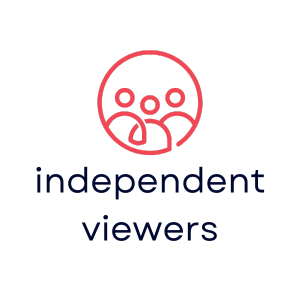In the wild world of content creation, standing out feels like trying to find a unicorn in a field of horses. With endless blogs, videos, and social media posts flooding the internet, it’s easy to get lost in the noise. But fear not! Mastering content creation best practices can turn even the most timid writer into a content superstar.
Content Creation Best Practices
Content creation requires a strategic approach to capture audience interest. Quality in content remains paramount; useful, engaging material keeps readers returning. Consistency fosters loyalty among audiences. Creating a content calendar can help maintain that consistency effectively.
Research plays a crucial role. Understanding target demographics and their preferences guides content direction. Incorporating relevant keywords enhances visibility in search engines. Utilizing tools for keyword research can provide insights into popular terms in the niche.
Clarity and simplicity often resonate with audiences. Keeping language straightforward ensures messages remain accessible. Short paragraphs and bullet points break up text, improving readability. Visual elements like images, infographics, and videos can enrich textual content, making it more engaging.
Optimization for mobile devices is essential. A significant percentage of users access content via smartphones. Ensuring content displays well on all devices enhances user experience.
Promoting content through various channels increases reach. Social media platforms, email newsletters, and community forums can amplify visibility. Engaging with audiences on these platforms encourages interaction and feedback.
Analyzing performance data helps refine future content. Metrics such as page views, engagement rates, and conversion rates provide insight into what resonates with audiences. Adapting strategies based on this feedback fosters continuous improvement.
Emphasizing originality sets content apart in a crowded marketplace. Unique perspectives and personal stories can create stronger connections with readers. Prioritizing authenticity enhances credibility and attracts a dedicated following.
Understanding Your Audience

Understanding the audience enhances content effectiveness. Tailoring content to specific needs increases engagement significantly.
Identifying Target Demographics
Identifying the audience’s demographics is crucial. Gather data on age, gender, location, and interests by utilizing analytics tools. This information helps define who engages most with the content. Check website analytics for insights on visitor demographics. Surveys and social media polls can further refine knowledge about audience preferences. Create content that aligns with these characteristics to boost relevance and relatability.
Creating Buyer Personas
Creating detailed buyer personas aids in content direction. Each persona represents a segment of the audience based on research. Include factors like goals, challenges, and preferred content formats. Dedicate time to understanding their motivations and pain points. Analyze competitor audiences for additional insights. Utilize these personas to tailor messaging and visuals in content strategies. Personalization based on these profiles fosters deeper connections and encourages loyalty among readers.
Developing a Content Strategy
Crafting a strong content strategy provides a clear direction for any content creator. This strategy helps ensure that the creation process remains focused and aligned with specific objectives.
Setting Clear Goals
Establishing clear goals drives successful content strategies. Define specific, measurable objectives that align with broader business aims. These may include increasing website traffic by 30% or boosting social media engagement by 50%. Setting deadlines encourages accountability; for instance, aiming to publish four blog posts each month. Furthermore, periodically reviewing these goals helps identify areas for improvement, ensuring ongoing relevance to the audience.
Importance of Content Calendar
Creating a content calendar enhances organization and consistency. This tool outlines publishing schedules for various platforms, simplifying planning for blogs, videos, and social media posts. Using a calendar helps maintain a steady flow of content; it also allows for strategic holiday or event-based posts. Effective calendars can signify upcoming campaigns and vital deadlines, making coordination smoother across teams. Regularly updating the calendar ensures adaptability to changing audience needs or industry trends.
Crafting Quality Content
Crafting quality content centers around originality and engagement. These components play a crucial role in forming connections with the audience.
Importance of Originality
Originality sets content apart in a crowded digital landscape. Unique insights or personal experiences resonate more with readers, fostering loyalty. It invites deeper engagement as audiences seek fresh perspectives that aren’t available elsewhere. Moreover, search engines favor original content, enhancing visibility in search results. Maintaining authenticity strengthens trust, encouraging readers to return for more. Creative storytelling provides an opportunity to share meaningful ideas that align with audience interests. The commitment to originality cultivates a distinct voice, essential for establishing a brand identity.
Tips for Engaging Writing
Engaging writing captures attention and keeps readers interested. Start with a compelling hook that immediately draws in the audience. Utilize active voice to create a dynamic reading experience. Short sentences enhance clarity, making complex ideas more digestible. Incorporate relevant anecdotes or examples to illustrate points effectively. Encourage interaction by posing questions, inviting readers to reflect on their experiences or opinions. Varying sentence structures adds rhythm, maintaining reader interest throughout the content. Moreover, using bullet points or lists can help highlight key takeaways efficiently. Prioritizing clarity and conciseness ultimately leads to a more engaging and credible piece.
Optimizing Content for SEO
Optimizing content for SEO maximizes visibility and enhances audience engagement. Effective practices focus on keyword research and on-page strategies.
Keyword Research Techniques
Keyword research techniques identify terms audiences use in searches. Utilizing tools like Google Keyword Planner aids in finding relevant keywords with high search volumes. Long-tail keywords provide specificity and typically face less competition. Analyzing competitors’ content reveals additional keyword opportunities, enhancing discovery. Tracking keyword performance increases understanding of what aligns best with audience search behavior.
On-Page SEO Strategies
On-page SEO strategies ensure content effectively reaches target audiences. Start by incorporating primary keywords in titles, headers, and body text. Using meta tags enhances search engine understanding of content relevance. Internal links guide readers to related information, improving site navigation. Image optimization, including alt text, boosts accessibility and search rankings. Formatting content with bullet points or numbered lists enhances readability and keeps viewers engaged.
Promoting Your Content
Effectively promoting content enhances visibility and engages a broader audience. Various strategies exist that facilitate successful promotion across multiple channels.
Leveraging Social Media
Utilizing social media platforms significantly amplifies content reach. Engaging posts on channels such as Facebook, Twitter, Instagram, and LinkedIn create opportunities for interaction. Sharing valuable snippets or visuals entices users to click and explore further. Collaborating with influencers or brand ambassadors broadens exposure and attracts new followers. Regularly analyzing engagement metrics informs strategies, ensuring content aligns with audience preferences. Scheduling posts during peak times maximizes visibility and encourages timely interactions.
Building an Email List
Establishing an email list forms the foundation for direct audience engagement. Offering incentives like exclusive content, discounts, or downloadable resources encourages sign-ups. Consistent communication through newsletters keeps content top of mind for subscribers. Segmenting the email list based on preferences or behaviors enables tailored content that resonates with specific audience groups. Analyzing open rates and click-through rates reveals insights into what content captivates readers, allowing for continuous refinement of email strategies.
Mastering content creation best practices is essential for anyone looking to thrive in a competitive digital landscape. By focusing on quality originality and audience engagement creators can significantly enhance their visibility and connection with readers. A strategic approach that includes a well-maintained content calendar and effective SEO techniques will ensure that content reaches its intended audience.
Moreover promoting content through diverse channels and continuously analyzing performance metrics allows for ongoing refinement and growth. Ultimately embracing authenticity and understanding audience needs will help foster loyalty and build a dedicated following. With these practices in place anyone can elevate their content creation efforts and achieve lasting success.

